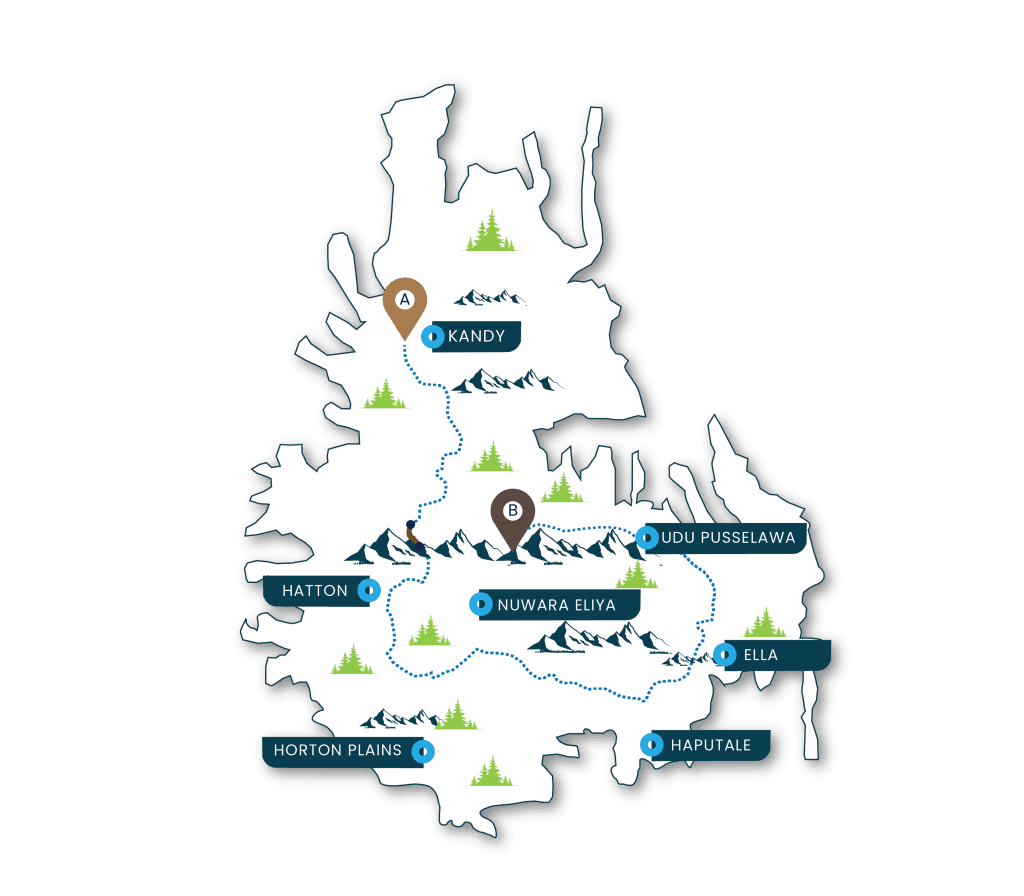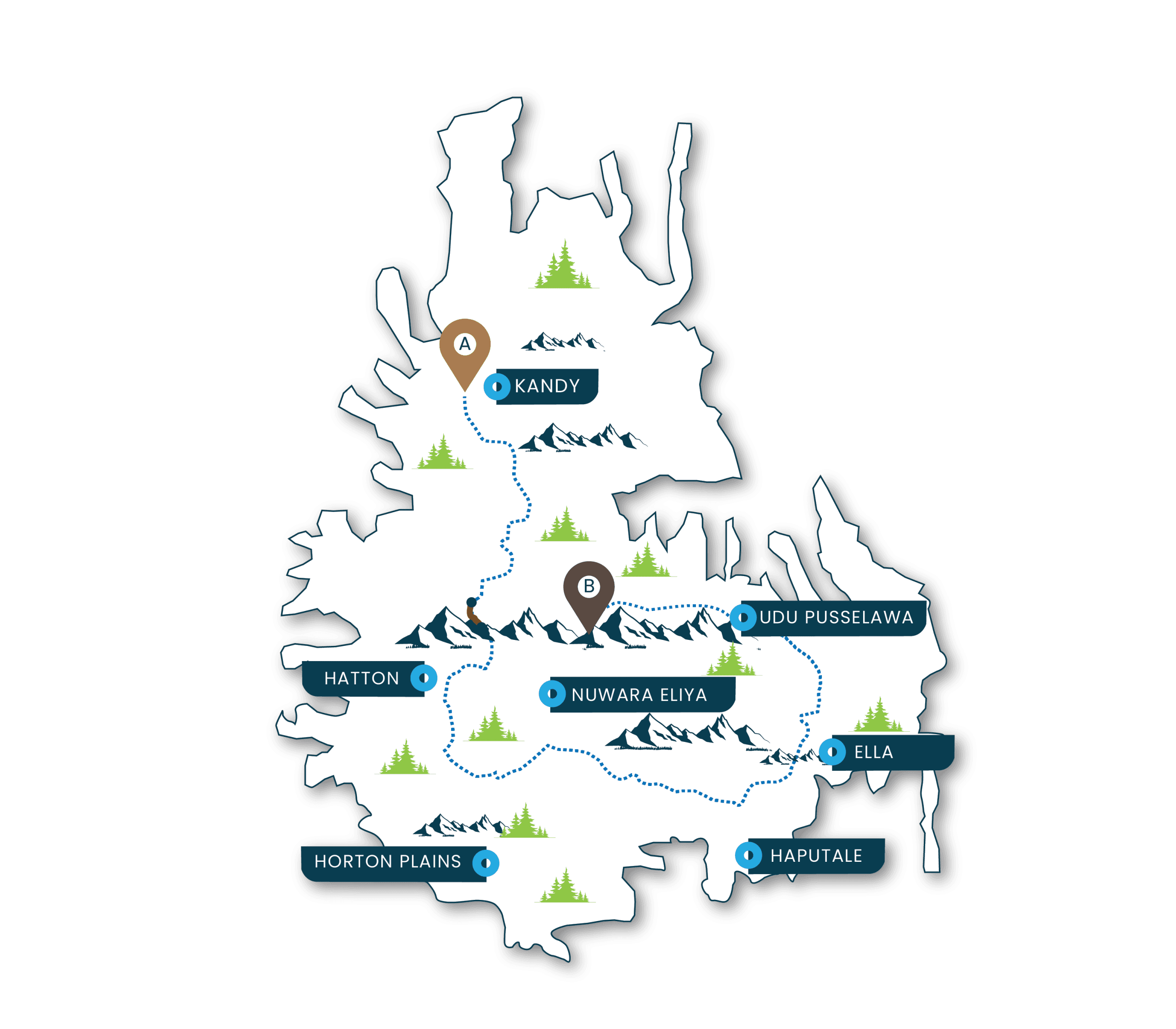Let’s walk through the 22 stages in a storytelling way. Imagine this as your personal guidebook before you set off.
Stage 1: Hanthana → Galaha
Your journey begins near Kandy, at the Ceylon Tea Museum in Hanthana. The old factory turned museum is the perfect starting point: it explains the origins of tea and sets the tone. The trail climbs into the Hanthana mountain range, with sweeping views of Kandy’s lake below. As you reach Galaha, you’ll feel the air cooling, the forest thickening, and the plantations stretching endlessly.
Stage 2: Galaha → Loolecondera
This stage is historically priceless. You arrive at Loolecondera Estate, the birthplace of tea in Sri Lanka. Here James Taylor planted his first bushes in 1867. His old cottage, now partly preserved, is still visible. Walking here feels like a pilgrimage for tea lovers.
Stage 3–5: Into the Highlands
These stages (Galaha → Thawalanthenna → Pundaluoya → Watagoda) take you deeper into the heart of tea country. The villages are smaller, the roads quieter, and the landscapes more remote. At times, you’ll walk for hours hearing nothing but birds and the rustling of tea leaves in the breeze.
Stage 6–9: Kotagala → Bogawanthalawa → Dayagama
This section is sometimes called “Little Scotland” for its rolling green valleys and mist-soaked mornings. The climate is cooler, with pine trees and colonial bungalows dotting the trail. In Bogawanthalawa you’ll find vast stretches of high-quality tea estates, known as the “Golden Valley of Tea.”
Stage 10: Dayagama → Horton Plains
This stage is a highlight for many. You climb into Horton Plains National Park, one of Sri Lanka’s most unique landscapes. The park is a UNESCO World Heritage Site, home to cloud forests, grasslands, and rare species like the sambar deer and purple-faced langur monkey. The famous World’s End viewpoint drops nearly 870 metres straight down — a dramatic reminder of nature’s power.
Stage 11–13: Horton Plains → Haputale → St. Catherine’s Seat
Descending from Horton Plains, the trail flows into Haputale, where Lipton’s Seat offers one of the best sunrise views in the country. Sir Thomas Lipton himself used to survey his plantations here. From Haputale, the trail meanders towards St. Catherine’s Seat, with panoramic views across southern Sri Lanka.
Stage 14–16: Towards Ella
The trail begins to shorten here, with stages under 10 km. You’ll walk to Ella, one of Sri Lanka’s most popular backpacker hubs. Along the way, you’ll cross the famous Nine Arches Bridge, watch trains snake through tea fields, and explore paths leading to Ella Rock or Little Adam’s Peak.
Stage 17–19: Hali-Ela → Ettampitiya → Lunuwatte
These are among the more challenging sections. Stage 19, in particular, involves a river crossing at Uma Oya and long climbs through tea and forest. But the remoteness is magical — you feel cut off from the world, surrounded by nothing but nature and the rhythms of village life.
Stage 20–22: The Final Push to Nuwara Eliya
The trail slowly winds towards Pedro Estate, just outside Nuwara Eliya — known as “Little England.” With its colonial architecture, racecourse, and cool climate, Nuwara Eliya feels almost European. Reaching Pedro Estate is a symbolic finish: from tea’s birthplace at Loolecondera to one of its most iconic estates, the circle is complete.










